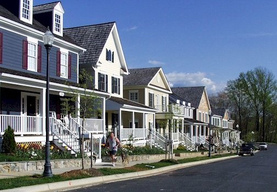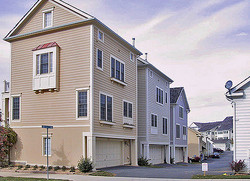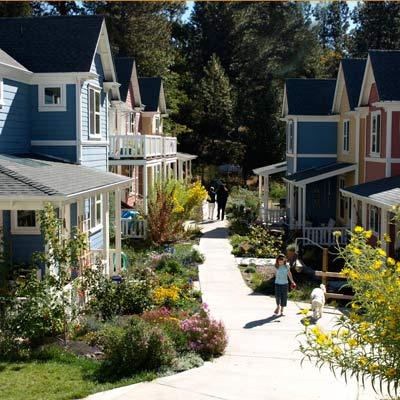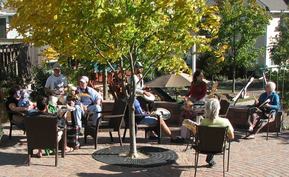|
By Peter Lazar  New Urbanism purports to solve the loneliness and disconnection that plagues our car-centric suburbs. The theory is that traffic problems will be solved and people will start to interact if you just remove the cul-de-sacs, cram the houses close together with friendly porches and move the cars to alleys in the back. But when I drive through a brand new New Urbanist neighborhood on a beautiful Friday afternoon at 5:30pm, the front porches are empty. I see nobody interacting in front. Where is everyone?  I see a car drive by and follow it. It goes behind the house into an alley. A garage door magically opens and the car drives in. The person has entered his house from a tunnel. By not walking by neighbors' houses, he has missed the opportunity to chat a bit. Such 5 minute encounters build up social capital that leads to more meaningful relationships. And were do the kids play? I should have taken a picture, but I was driving by one of these places and I saw the kids rolling around back on their bigwheels. Where can the parents and their friends hang out and watch? There are porches in front, but there’s no place to play there. So here’s the solution: Move the cars to the periphery, and put the people in front! This is a typical cohousing neighborhood with a pedestrian-oriented street. And here’s another cohousing neighborhood with a pedestrian plaza. Notice all the people hanging out. That's a typical afternoon in cohousing. This is how we should design our neighborhoods.
First Photo: BeyondDC, Creative Commons attribution license Second Photo: Brett VA, Creative Commons attribution license Third Photo: David Shankbone, GNU Free Documentation License Fourth Photo: Sunward Cohousig. Mconavon, GNU Free Documentation License
0 Comments
Your comment will be posted after it is approved.
Leave a Reply. |
LinksArchive
July 2020
TOPICS |
Contact Us • Emerson Commons Cohousing • 610 Teaberry Lane, Crozet, VA 22932


